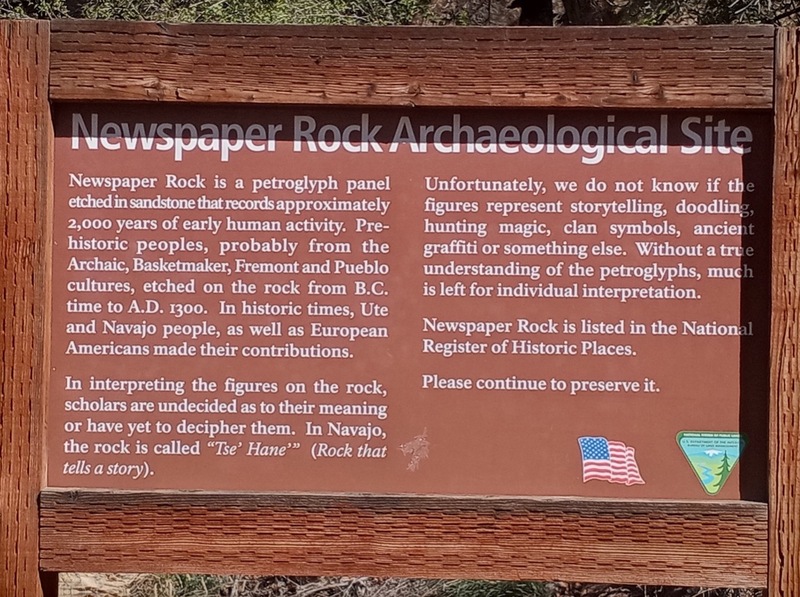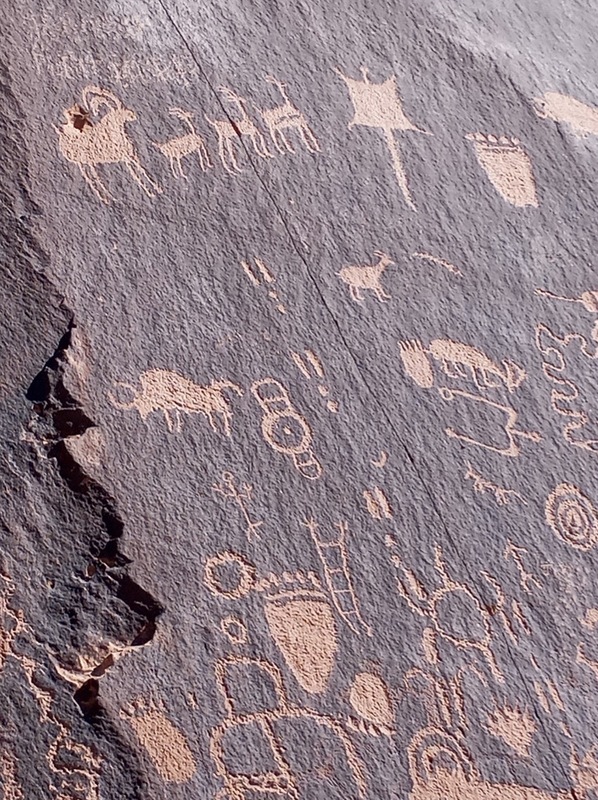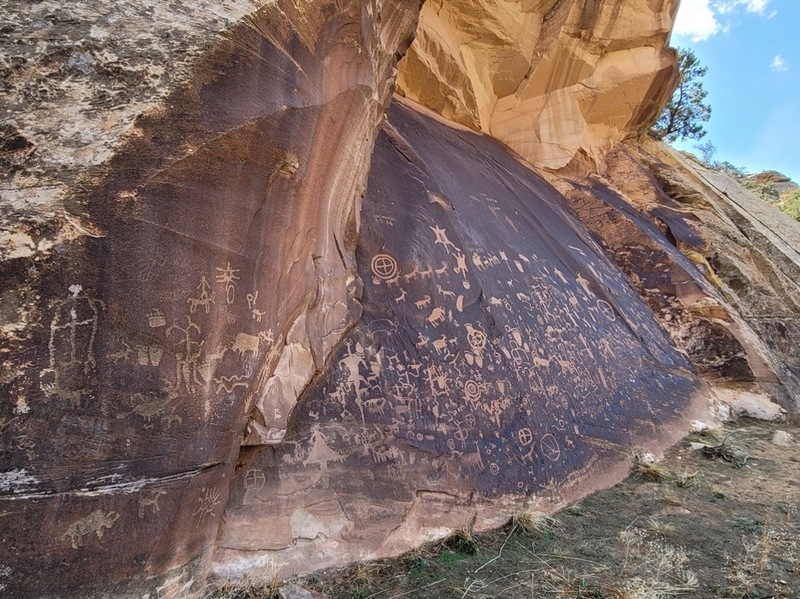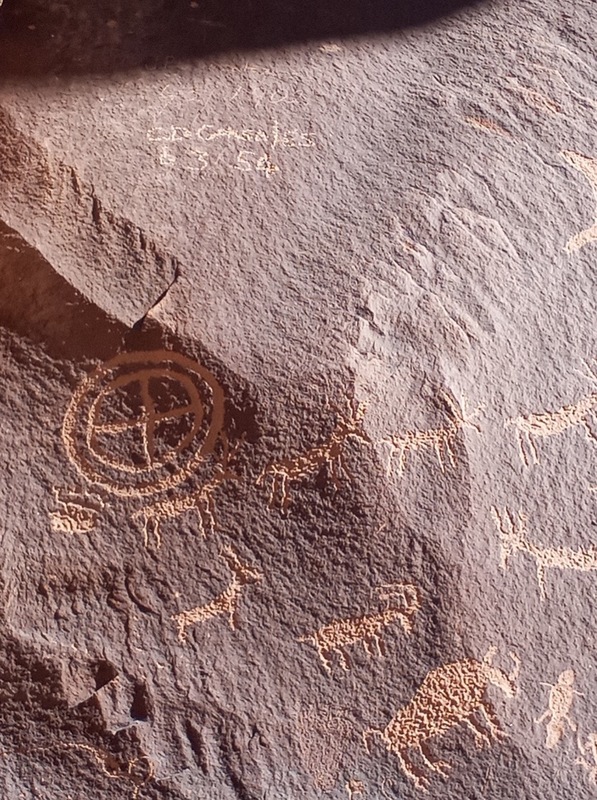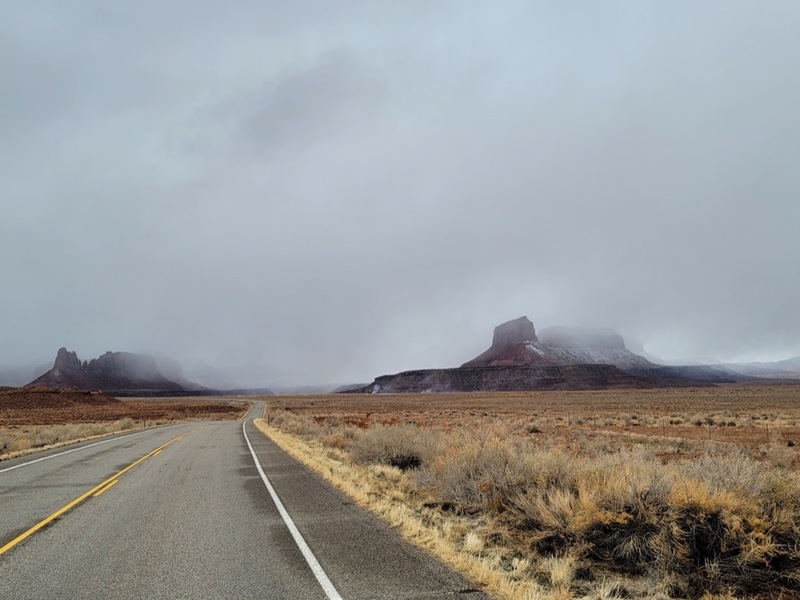Newspaper Rock
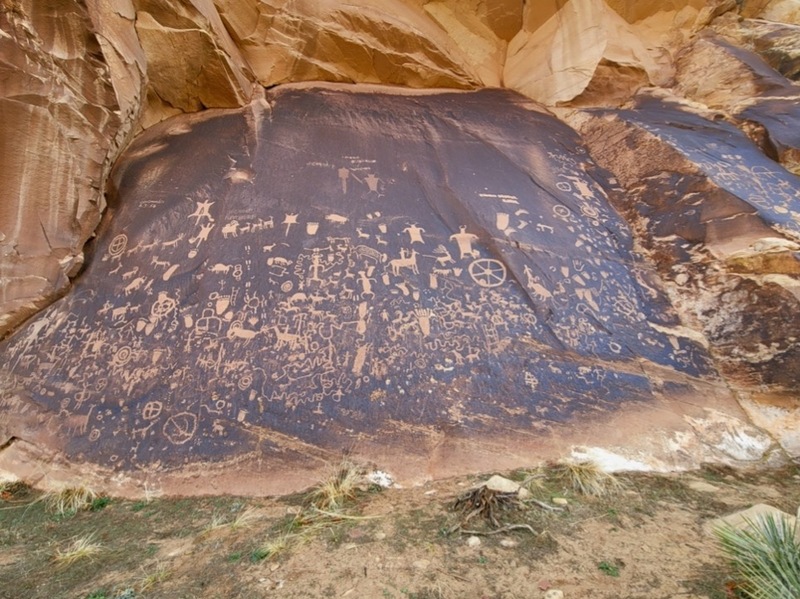
One of many petroglyph sites in Utah, Newspaper Rock is unique because of the large time span in which the petroglyphs were drawn. It is a look into the past lives of those who lived in Utah before us.
Newspaper Rock is located along the Scenic Creek Corridor Scenic Byway in the Bears Ears National Monument, created on the cliffs that go through all of Indian Creek Canyon. Newspaper Rock is about 24 miles northwest of Monticello and 50 miles south of Moab. The actual petroglyph site is around 200 square feet across. It is located along the main road to the Needles District of Canyonlands National Park. There is no fee to access this site, and it is open all year long. Formerly a state park, Newspaper Rock currently carries the designation of a National Monument.
The petroglyphs that cover the group of rocks collectively known as Newspaper Rock were drawn across a wide span of time ranging from 1200 to 200 years ago. The petroglyphs are thought to be drawn by a variety of people including the Ancestral Pueblo, Fremont, Basket Maker, and Navajo peoples.
As a hunter-gather people living around 100 CE, Ancestral Puebloans’ diet relied upon hunting. Later, they transitioned to a sedentary lifestyle and relied more upon agriculture. They occupied the southwest area of the modern-day United States until droughts destroyed their agricultural economy and forced them to move away from Utah, Arizona, Colorado, and New Mexico to other areas with more water. The Fremont also inhabited this area around the same time as the Ancestral Puebloans. Similarly, they developed agricultural practices, but hunting remained an important part of their culture until devastating droughts hit the region. By the fifteenth century, the Diné (Navajo) arrived and, like their predecessors, participated in hunting and gathering. When the Diné moved into the southwest, they adapted some of the Puebloans’ agricultural practices and cultivated corn, beans, and squash while supplementing their diet through hunting.
The Ancestral Puebloans, Fremont, and Navajos all added carvings to this rock over the course of centuries. As a result, there is no linear story that can be understood from the pictures. Most of the pictures remain unidentified and uninterpreted because there is no way to discover their meaning. It is unclear why this particular rock was such a popular place for petroglyphs, but its popularity in the ancient world has made it popular again in the modern world. European explorers added more names and dates, and curious visitors come to see the pictures etched by ancient peoples long past.
In the Navajo language, Newspaper Rock is called Tse’ Hane, which means, “rock that tells a story.” What do these ancient storytellers reveal about the Native American Indians who created These mysterious images? Though there is no exact translation known for many of these petroglyphs, it is possible to infer some things about the people from their rock art. These markings, engravings, and drawings tell us about stories, hunting patterns, crop cycles, beliefs, and mythologies of their existence. Some modern Native American Indians have interpreted the drawings on the rock to include family or clan symbols, spiritual meanings, and calendar events. Images include those of animals, people, tools, and other items. We know that the drawings were compiled over time by different groups who were in the area. Earlier drawings resemble snakes, wagon wheels, lizards, footprints, and broad shouldered, animal headed people. Some we can tell were made later, depicting men on horseback, potentially referring to the coming of the Spanish and other colonizers who threatened some groups and brought prosperity to others. These petroglyphs help us add to the tales we already know about these ancient people as we build on the foundation of what we know about them from other artifacts and oral histories.
Images

